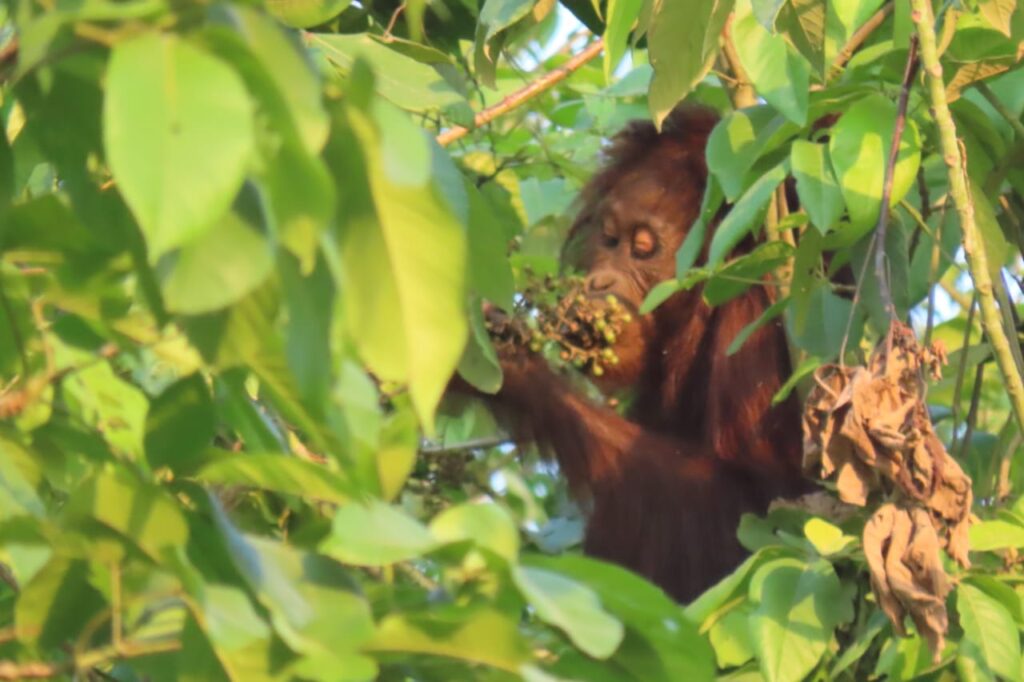
There are many reports and complaints from the public regarding orangutans often seen along the Sangatta-Benggalon-Kaliorang highway. Forest conversion along this road is suspected of having an impact on changes in the landscape which is the habitat of orangutans and other wildlife. The remaining fragmented forests and bushes are the last habitat for orangutans. This prompted the OWT Foundation in collaboration with the Conservation Action Network (CAN) to conduct a survey of negative interactions between orangutans on the Sangatta Bengalon Highway in East Kalimantan Province.
The survey showed that on the 20 km Sangata-Bengalon Highway, orangutan nests and individuals were still found. Orangutan nests were built at pole or tree level, where the nests were built from low locations (<5m) to high locations (>25m), mostly in the middle or the end of branches. 39% of nest classes were class D or almost all leaves had disappeared. There were 12 types of nest trees found, most of nests were found on rubber trees and Macaranga sp. Based on observations, in the forest area around Sangatta-Bengalon highway, East Kalimantan Province, on a 20 km transect length, 21 nests were found with a nest density of 34.71 nests/km2 and an estimated orangutan population density of 0.14 individuals/km2 .
According to community, there are 2-6 orangutans around the right and left sides of Sangatta-Bengalon Highway with a frequency of encounters every day, every week or once a month. Orangutans are more often seen in the afternoon, activities seen include orangutans crossing highway. The sizes of orangutans encountered vary from small, medium to large. The cause of the appearance of orangutans around the highway according to the community’s perspective is because their habitat is disturbed, there is no shelter, and food in the forest is depleted because the forest has been opened up due to mining activities.
The community stated that there was no direct conflict with the orangutans, but it occurred because the orangutans ate fruit in the community garden, including fruit trees that were located close to the house during the fruiting season, such as rambutan. In oil palm plantations, orangutans are often found eating oil palm plants, especially oil palm shoots and breaking down newly planted oil palms.
